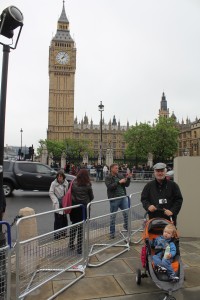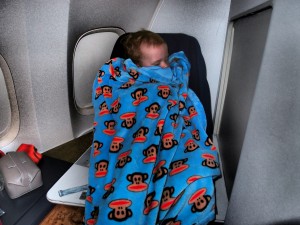nbsp;
When my in-laws come from China to the US, they take days to feel back to normal. At 8:30 a.m. they board the flight from Beijing, in 12 hours they arrive at 5:30 am in Seattle. But for them it is now 8:30 pm.My in laws strategy for jetlag has always been to stay up with us, trying not to miss a minute with their grandson. A better way is to ease into the new time zone, but by regulating the amount of light that your brain sees.
Traveling east is always worse than travelling west. Heading to China is a breeze (they call it the far east, but we travel west to get there). Major league baseball players know this- their teams give up one more run when they travel east. Jet lag is real- it is tough, but there are some things that work- and some that don’t.
BEFORE YOU TRAVEL:
The new key is regulating the light that you are exposed to – and doing it gently. If you travel east, you will be going to bed earlier (always a bonus) but getting up earlier. Start by dimming the lights earlier in the evening at the house. Then, get up a bit earlier a few days before and expose yourself to more light in the early morning. For some destinations this is easier to do than others. A two time zone travel is fairly easy to wait til you ge there. But a three time zone travel is tougher. So here is the plan for the three time zone travel.
Begin getting up an hour earlier than normal and going to bed an hour earlier. If you can’t get to sleep an hour earlier- then begin the process by dimming the lights, even to wearing sunglasses, before you go to bed. This starts the process of getting your internal clock switched.
Longer than three time zones is tougher to adapt – but you can still begin the process before you travel, getting up earlier, going to be earlier.
ON THE PLANE:
If you can get sleep while traveling that is a good thing. For the longer international flights, where you are going through multiple time zones- continue to use light on the plane to help regulate your clock. Even wear sunglasses during the flight during the times when it would be dark where you are headed. Use the eye masks, ear plugs- or plug in the noise canceling headphones and leave them on quiet mode to help you sleep.
The Fast ReBoot:
For the longer international flights some have tried the quick reboot—staying up much later right up to the flight, and sleeping on the flight. This works for a bit- if you can sleep on the plane this works even better.
What does not work: alcohol, most sleeping medications. Alcohol does not provide a great sleep.. If you use a prescription sleeping medication, like Ambien, be certain that someone is travelling with you – because sometimes these medications last much longer than the flight does. The short acting sleeping medications like zaleplon can be used, but again- it would be advised to use on flights longer than 8 hours, and if you have someone who will travel with you.
Melatonin
This is has been studied with jet lag, and in some good studies has been found to help readjust the sleep cycle. I was clearly skeptical of a non FDA approved substance, but the literature is convincing. The issue would be purchase of the melatonin from a reliable source that has a dose that is checked.
So if you are traveling west the recommendation is to take melatonin To promote shifting of the body clock to a later time, take 0.5 mg (a shortacting dose) during the second half of the night until you have become adapted to local time.
For travel east, and to promote shifting of the body clock to an earlier time, take 0.5–3 mg at local bedtime nightly until you have become adapted to local time
When you get there- don’t eat heavy meals- eat light, and enjoy the time. 






No Responses to “SLEEP: Beating Jet Lag”